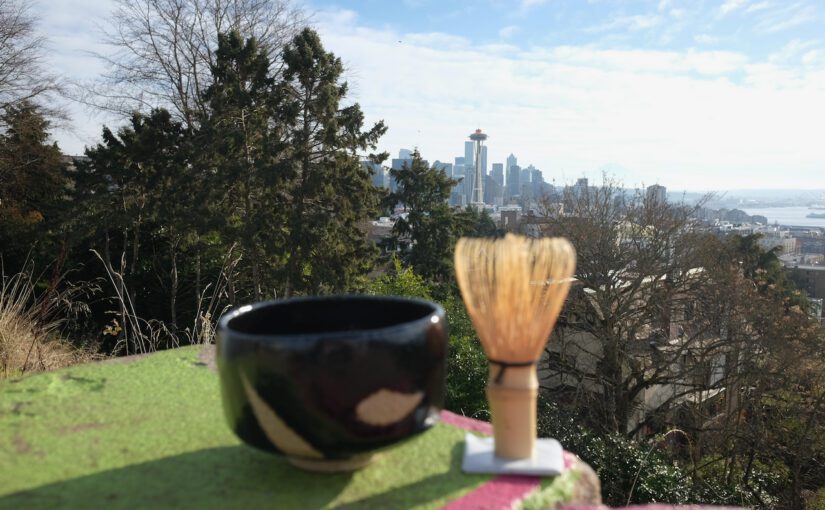Thanks to Mr. Sen Genshitsu for his devotion to promoting “Peacefulness through a Bowl of Tea”
View of Seattle: Photo by Author Akemi Sagawa
As long as I was growing up and living in Japan, the Japanese tea ceremony was a synonym for “outdated” in my perception. Just like Ikebana, I started practicing tea ceremony only after I moved to Seattle.
You may wonder how it’s possible to learn such a traditional culture in a city so far away from Japan.
I’m forever thankful to a person for giving me and many people such an opportunity.
His name is Sen Genshitsu, 千玄室, the fifteenth-generation grand master of the Urasenke School of Japanese Tea. Now that his son has taken over as the current grand master (Iemoto), we call him “Daisosho.”
In 1923, Daisosho was born in Kyoto as the first son of the 14th-generation grandmaster of Urasenke. During World War II, he served in the air force division of the Japanese navy. His division was also called “Kamikaze Tokkotai,” a special brigade of suicide pilots.
His colleagues in the division took off on a mission of no return. Daisosho would serve a bowl of tea to his colleagues before their last flights. Daisosho was also ready to die, but the war was over before he took off his own last flight. Among his division, only he and another person survived.
After the war, Daisosho took up his mission to promote world peace through a bowl of tea. In 1950 he visited Hawaii and established the first Urasenke overseas study group. Since then, he has made more than three hundred trips overseas and visited over 60 countries. Daisosho also established a training course for the tea ceremony for foreign students in Kyoto. More than 500 alumni returned to their home countries and many are spreading the Urasenke teachings worldwide.
Seattle is one of the cities that benefited Daisosho’s dedication to promoting “peacefulness through a bowl of tea.” Urasenke donated the tea house in Seattle Japanese Garden as well as in Seattle Art Museum. There are active teachers and study groups here in Seattle. Chado Urasenke Tankokai Seattle Association, or Seattle Tankokai for short, has just celebrated its 50th anniversary this summer.
About 10 years ago I joined one of the study groups, then joined Seattle Tankokai. There people with various backgrounds gather regularly and learn the way of tea, a simple act of serving a bowl of tea.
At the age of 99 this year, Daisosho is still actively hosting dignitaries from many countries.
By serving another person a bowl of tea, we realize that we are all humans, regardless of nationality, race, or ethnicity. Thanks to Daisosho’s life experience and the mission he has taken up, I am able to learn the essence of the tea ceremony here in Seattle.
